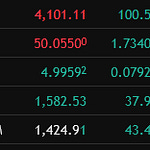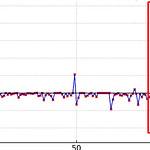“黄金的 重估是一个过程,而不是一个事件”
“Can silver mine supply meet increasing industrial demand?”
[all emphasis and comments added]
The silver market is experiencing its fourth consecutive year of structural deficit, driven primarily by increasing industrial demand. This deficit is expected to persist and so notably deplete above ground stocks. A critical question now facing the market is whether mine supply can respond to restore balance.
Silver mine supply, after two decades of consistent year-on-year growth, peaked at 900.1Moz ( 27,996t) in 2016. During that period, the silver price, despite some volatility, averaged $13.3/oz. Since 2016, the silver price has averaged $20.7/oz, with current spot prices at around $31.5/oz. However, despite these higher prices, mine supply in 2024 is projected to be 62.8Moz (1,954t) lower than the 2016 peak, representing a 7% decline. Looking ahead, the structural deficits are expected to support silver prices, which are forecast to ultimately reach record highs over the next five years. However, mine supply growth is likely to remain modest, with only minimal increases globally.
[Edit- despite higher prices, mines will not be able to ramp up much production. implicitly the scrap and above ground recyclable will be more important]
The price inelasticity of silver mine supply is largely due to the fact that 55% of silver is mined as a by-product of base metal operations. Although silver can be a significant revenue stream, the economics and production plans of these mines are primarily driven by the markets for copper, lead and zinc. Consequently, even significant increases in silver prices are unlikely to influence production plans that are dependent on other metals.
[EDIT- and a drop in copper prices will serve as a floor for silver supply growth.]
This dynamic is further accentuated by the prevalence of silver streaming deals at key base metal mines. Producers often enter into these agreements because silver does not drive the core economics of their operations, allowing them to trade future silver revenues for lower cost of capital. These streaming and royalty agreements now account for around 4% of total silver supply, further disconnecting by-product silver production from silver market fundamentals.
Not all silver, however, is mined as a by-product. This year, approximately 28% of global silver supply is expected to come from primary silver mines, where production is directly tied to silver prices. Despite significant price increases since 2016, primary silver production has fallen, accounting for most of the supply decline since the peak. This reduction is, in part, due to decreasing ore grades. Over the past decade, silver grades have fallen by 22%, meaning that prices must rise by an equivalent percentage to maintain margins.
In addition to geological challenges, regional dynamics have led to the closure of key mines. For example, Guatemala’s Escobal mine, which produced 21 Moz (653t) of silver at its peak in 2016, has been suspended since 2017 following a court proceeding brought about by community opposition.1 Guatemala’s Constitutional Court upheld the suspension in 2018, citing a failure to consult with local Indigenous communities as required by law. A court-mandated consultation process with the Xinka people is ongoing with no set completion date. Similarly, in November 2023, following pressure from environmental groups, Panama’s Supreme Court ruled that the contract to operate for First Quantum’s Cobre Panama mine was unconstitutional, removing 2.8 Moz (87t) of silver from the market.
Rising production costs have further constrained silver supply. Despite higher silver prices, operating costs in many cases have outpaced revenue growth, leading to little or no improvement in operating cash flow for silver-focused mining companies. Moreover, capital expenditure requirements have continued to rise, with mining cost inflation requiring increasing investment just to maintain current production levels. As a result, many silver miners have been free cash flow negative in recent years.
However, the marginal economics of many primary silver mines mean that, should prices rise as projected, a threshold will be reached where higher revenues translate into improved free cash flow. At that point, the future of primary silver mine supply will depend on how management allocates capital. In recent years, shareholder returns through dividends and share buybacks have been muted, falling well below the highs of the 2011-2012 cycle. With shareholder pressure for returns increasing, some growth in free cash flow is expected to be directed toward shareholder returns not growing production volumes.
[EDIT- Shareholder value will come before new production]
In addition, escalating ESG constraints, persistent community opposition, and ongoing cost inflation and procurement challenges related to mine development have intensified the risks associated with bringing new mines into operation. Some management teams will prefer to pursue growth through mergers and acquisitions (M&A) rather than new mine developments. Nonetheless, some companies will pursue project development, including both greenfield and brownfield expansion, as well as the potential restart of operations currently on care and maintenance.
[Only Above Ground Stocks and Scrap can Save us]
The timing of new supply will be critical, as developing a mine takes many years. This means that it is implausible that new production could balance the current deficits over the short to medium term. For those shortfalls to end, we are instead dependent on recycling and demand to react to the forecast price rally. This would come soonest in the price sensitive areas (mainly jewellery and silverware). However, we also need that to happen to retail investment (which may not immediately occur should investors buy into the rally, rather than profit take) and to industrial demand through thrifting and substitution (which itself can take a year or two as products are redesigned and recertified). As such, it is only continued drawdowns from above-ground stocks that can balance the market in the next few years
///end…













